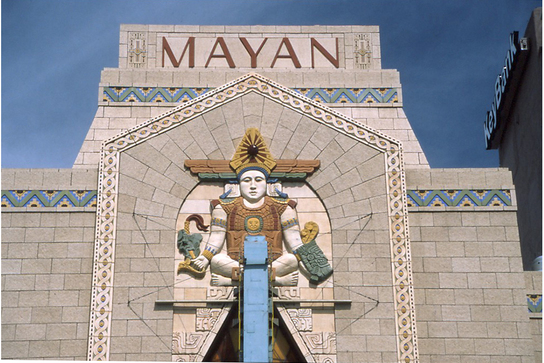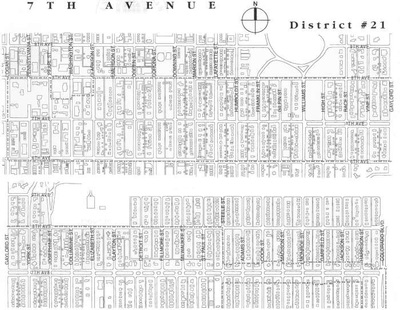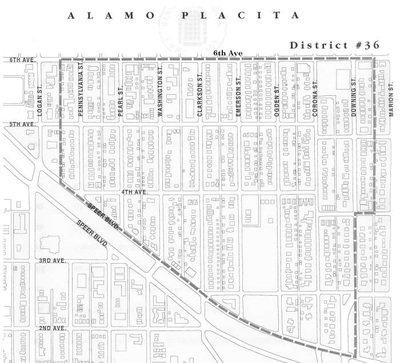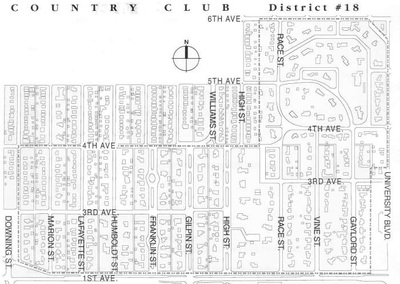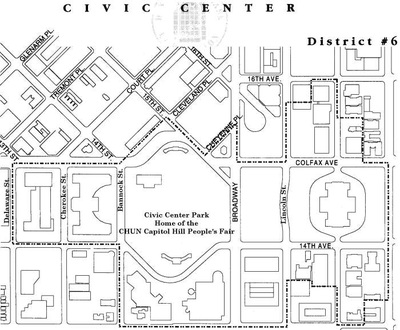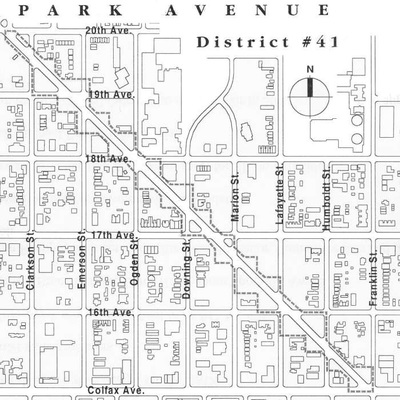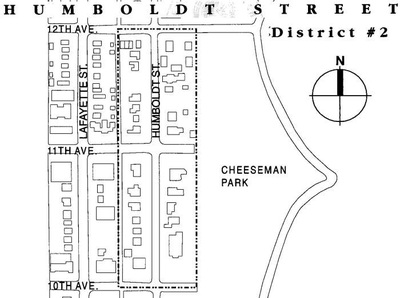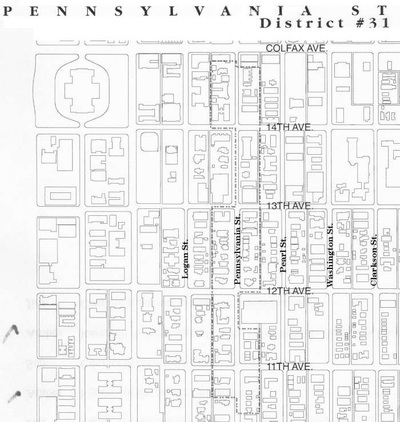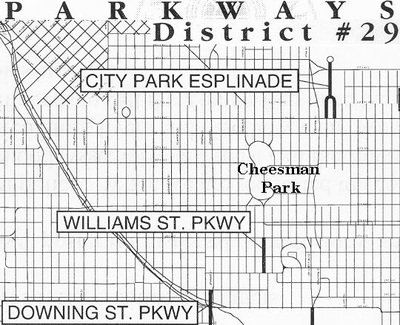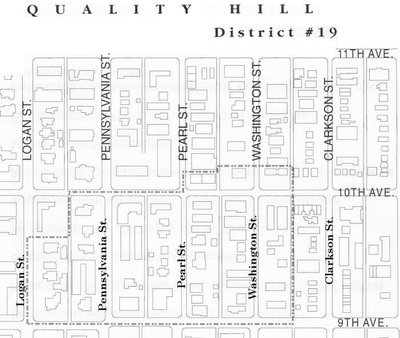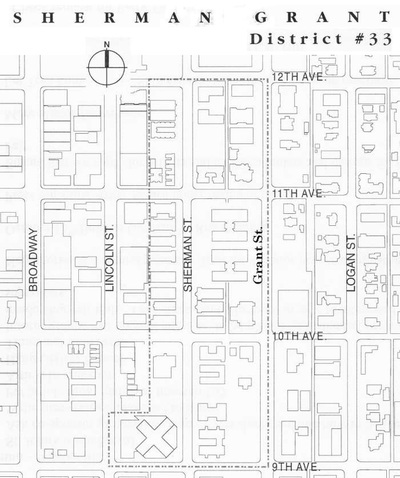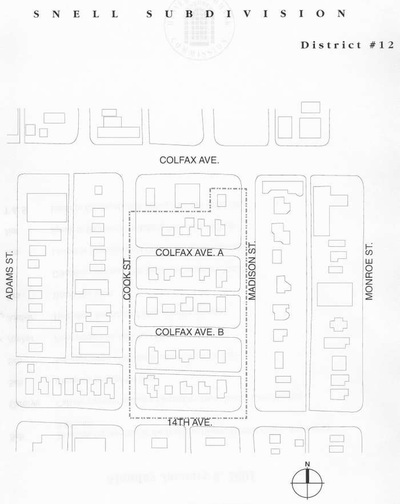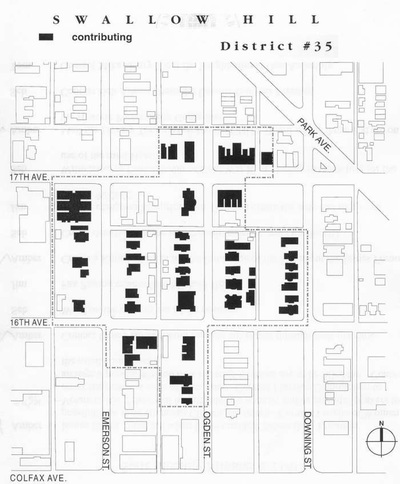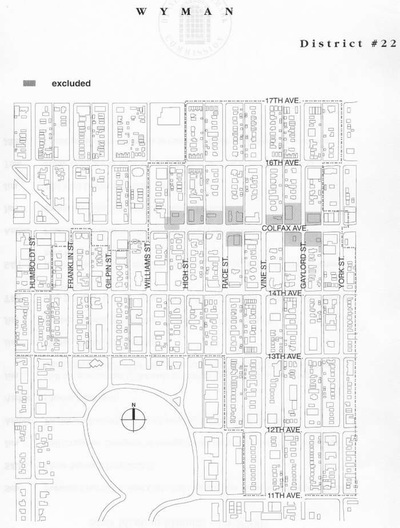|
The History Matters Committee is responsible for numerous historic districts as well as individually designated homes and buildings.
The History Matters Committee has protected a number of Capitol Hill Landmarks, including:
|
What is a 'Contributing Structure'?In the law regulating historic districts in the United States, a contributing property or contributing resource is any building, object, or structure which adds to the historical integrity or architectural qualities that make the historic district, listed locally or federally, significant.
|
Many people look at historic preservation as primarily a warm, fuzzy activity saving our architectural and historical heritage.
Here in Colorado, historic preservation has a large economic impact as well. The following information comes from “The Economic Benefits of Historic Preservation in Colorado”, a publication of the Colorado Historical Foundation.
Property owners in Colorado turn to three programs to help them rehabilitate historic buildings: Grants distributed through the State Historic Fund, a federal tax credit, and a state tax credit. With minimal public cost, these programs have generated vast amounts of private capital devoted to historic preservation.
In summary:
Historic Preservation is much more than just saving old buildings!
City Council Approved Changes to Landmark Preservation Ordinance
Denver City Council approved a series of changes to the city’s landmark preservation ordinance proposed by the Community Planning and Development Department (CPD).The changes, specific to the demolition and historic designation sections of the ordinance, seek to balance community, preservationist and landowner interests, and to eliminate unnecessary steps from the demolition review and historic-designation review processes.
Key changes involved in the ordinance update:
View the full proposal
The fee for non-owner initiated landmark designation applications (previously set at $250) has been increased to $500. The new fee was based on community input and the estimated manpower cost of processing non-owner-initiated designation applications.
Landmark Preservation staff first brought a draft of landmark ordinance changes to City Council’s Land Use, Transportation and Infrastructure committee as an informational item in July.
Later, the city’s Landmark Preservation Commission reviewed the proposals in a series of public meetings, and recommended approval. In addition, CPD staff has done considerable outreach over the last six months to community groups, registered neighborhood organizations, city council members and others to gather input and respond to questions and concerns about the changes. The ordinance changes were modified several times based on stakeholder feedback.
The landmark preservation ordinance was established in 1967. Changes in 2006 sought to prevent “surprise” demolitions of potentially historic buildings. In early 2012 the Community Planning and Development Department began drafting proposed changes based on opportunities for improvement identified by staff.
Later in 2012, two controversial landmark designation applications were filed — one on the Gates rubber plant property and one on a partially-demolished warehouse on Huron Street in the Ballpark neighborhood. Each raised questions about the city’s process and drew further attention to the need for updates to the ordinance.
LANDMARK PRESERVATION DESIGN GUIDELINES WORKSHOP
Last month, more than 100 landmark and historic district property owners and stakeholders attended the first public workshop on the planned update to the citywide landmark design review guidelines, hosted by Denver’s Community Planning and Development Department and the Landmark Preservation Commission.
Held on Monday, Dec. 9, the workshop offered attendees the opportunity to weigh in on the effort to modernize the process by which we preserve, protect and enhance our city’s treasured buildings and neighborhoods. Attendees offered comments on the project as a whole as well as specific subject areas that will be covered by the guidelines including windows, retaining walls, additions and new infill construction. A review of the workshop and summary of participant comments has been compiled and posted on the landmark design guidelines page of the city website and is available for download here (PDF).
To view PDF versions of the results of the workshop exercises, click on each topic below:
• New infill (PDF)
• Pop-top additions (PDF)
• Windows (PDF)
• Rear additions (PDF)
• Retaining walls (PDF)
Historic Districts
Dating back to the mid-1800′s, Denver’s historic past is filled with interesting facts, beautiful architecture, and a strong heritage that has be carried down through generations of devoted Denver residents.
Here in Colorado, historic preservation has a large economic impact as well. The following information comes from “The Economic Benefits of Historic Preservation in Colorado”, a publication of the Colorado Historical Foundation.
Property owners in Colorado turn to three programs to help them rehabilitate historic buildings: Grants distributed through the State Historic Fund, a federal tax credit, and a state tax credit. With minimal public cost, these programs have generated vast amounts of private capital devoted to historic preservation.
In summary:
- Between 1993 and 2001, the State Historic Fund distributed over $62.8 million in grants to 849 Colorado rehabilitation projects, with an additional $355.2 million contributed through public and private matching funds.
- Between 1981 and 2000, 301 Colorado projects with a combined total project cost of $461.6 million utilized the federal rehabilitation tax credit.
- Between 1991 and 2000, 385 Colorado projects with a combined total cost of $32.4 million utilized the state rehabilitation tax credit.
Historic Preservation is much more than just saving old buildings!
City Council Approved Changes to Landmark Preservation Ordinance
Denver City Council approved a series of changes to the city’s landmark preservation ordinance proposed by the Community Planning and Development Department (CPD).The changes, specific to the demolition and historic designation sections of the ordinance, seek to balance community, preservationist and landowner interests, and to eliminate unnecessary steps from the demolition review and historic-designation review processes.
Key changes involved in the ordinance update:
- Require that non-owner initiated designation applications be filed by a minimum of three Denver residents or property owners, or the CPD manager, or a City Council member. This provision raises the level of community support and involvement required for a non-owner-initiated application.
- Limit Landmark Preservation staff review of demolition permits for undesignated properties to primary structures and large accessory structures, effectively eliminating unnecessary reviews for garage and shed demolitions. (Currently, Landmark Preservation staff reviews all demolition permits to ensure that historic properties are not demolished without community notification.)
- Require that non-owner applicants file a landmark designation application within 21 days of demolition posting by the city, or within 28 days if a notice of intent to file is sent. This provision provides applicants with more time, while providing property owners with a “heads-up.”
- Allow the Landmark Preservation Commission to consider historic or physical integrity and relative significance of a structure or district when reviewing an application for historic designation — factors the commission was not empowered to consider until now.
- Provide for other administrative changes that streamline the process.
View the full proposal
The fee for non-owner initiated landmark designation applications (previously set at $250) has been increased to $500. The new fee was based on community input and the estimated manpower cost of processing non-owner-initiated designation applications.
Landmark Preservation staff first brought a draft of landmark ordinance changes to City Council’s Land Use, Transportation and Infrastructure committee as an informational item in July.
Later, the city’s Landmark Preservation Commission reviewed the proposals in a series of public meetings, and recommended approval. In addition, CPD staff has done considerable outreach over the last six months to community groups, registered neighborhood organizations, city council members and others to gather input and respond to questions and concerns about the changes. The ordinance changes were modified several times based on stakeholder feedback.
The landmark preservation ordinance was established in 1967. Changes in 2006 sought to prevent “surprise” demolitions of potentially historic buildings. In early 2012 the Community Planning and Development Department began drafting proposed changes based on opportunities for improvement identified by staff.
Later in 2012, two controversial landmark designation applications were filed — one on the Gates rubber plant property and one on a partially-demolished warehouse on Huron Street in the Ballpark neighborhood. Each raised questions about the city’s process and drew further attention to the need for updates to the ordinance.
LANDMARK PRESERVATION DESIGN GUIDELINES WORKSHOP
Last month, more than 100 landmark and historic district property owners and stakeholders attended the first public workshop on the planned update to the citywide landmark design review guidelines, hosted by Denver’s Community Planning and Development Department and the Landmark Preservation Commission.
Held on Monday, Dec. 9, the workshop offered attendees the opportunity to weigh in on the effort to modernize the process by which we preserve, protect and enhance our city’s treasured buildings and neighborhoods. Attendees offered comments on the project as a whole as well as specific subject areas that will be covered by the guidelines including windows, retaining walls, additions and new infill construction. A review of the workshop and summary of participant comments has been compiled and posted on the landmark design guidelines page of the city website and is available for download here (PDF).
To view PDF versions of the results of the workshop exercises, click on each topic below:
• New infill (PDF)
• Pop-top additions (PDF)
• Windows (PDF)
• Rear additions (PDF)
• Retaining walls (PDF)
Historic Districts
Dating back to the mid-1800′s, Denver’s historic past is filled with interesting facts, beautiful architecture, and a strong heritage that has be carried down through generations of devoted Denver residents.
|
7th Ave. Historic District #21 (View Map Below)
E. Seventh Ave. Pkwy. from Williams St. to Colorado Blvd. Period of Significance: 1900-1924 Historic Significance: Architecture/Engineering, Event Alamo Placita #36 (View Map Below) Steve Nissen 528 Pennsylvania St. Denver, CO 80203 303-733-8524 North: 6th/7th Ave. South: Speer Blvd. East: Downing West: Pennsylvania Civic Center Park #6 (View Map Below) Inducted: 1974 Period of Significance: 1900-1924, 1925-1949 Civic Center Park Historic District extends NE to include a small portion of the North Capitol Hill neighborhood. Civic Center Park is host to the CHUN Capitol Hill People’s Fair Country Club Historic Neighborhood, Inc. #18 (View Map Below) Period of Significance: 1900-1924, 1925-1949 1st and 4th Avenues. Race and Downing Street. Humboldt St. #2 (View Map Below) Lying on the West side of Cheesman Park is the Humboldt St. Historic District. (added 1978 – Denver County – #78000848) Humboldt St. between E. 10th and E. 12th St’s., Denver (50 acres, 25 buildings) Historic Significance: Architecture/Engineering, Person Architect, builder, or engineer: Multiple Architectural Style: Mixed (More Than 2 Styles From Different Periods) Historic Person: Brown,Lyman H.,et al. Significant Year: 1895, 1920 Area of Significance: Industry, Landscape Architecture, Commerce, Politics/Government, Architecture Period of Significance: 1875-1899, 1900-1924 Park Avenue #41 (View Map Below) Park Avenue Historic District stretches SE from 20th Ave to Colfax Ave. |
Pennsylvania Street #31 (View Map Below)
Magnificent houses from the late 1800′s many feature the Richardsonian Romanesque style: high turrets, balconies, soaring chimneys and grand curved porches. Home of the Molly Brown House Quality Hill #19 (View Map Below) Built in the late 1800′s early 1900′s and was home to some of the wealthiest settlers in Denver. The Quality Hill District is only one block wide from 9th to 10th Avenues and stretches from Logan St. east to the Washington/Clarkson St. alley. Sherman/Grant #33 (View Map Below) Also known as Poet’s Row for the numerous apartment buildings built in the 1920s and 1930s named after famous poets.The Sherman/Grant Historic District stretches from 9th Ave. to 12th Ave. and includes the West side of Grant Street and both sides of Sherman Street Snell Subdivision #12 (View Map Below) North-South: Colfax Ave. – 14th Ave. East-West: Cook St. – Madison St. One of the more unique sections of the neighborhood with two east to west cross streets between blocks. Swallow Hill #35 (View Map Below) Inducted: 1998 Period of Significance: 1875-1899, 1900-1924 Architectural Style: Late 19th And 20th Century Revivals, Prairie School, Late Victorian (220 acres, 60 buildings) Wyman Historic #22 (View Map Below) North-South: 17th Ave. – 11th Ave. East-West: York St. – Franklin St. Ms. Margot Crowe (303)321-9975 Historic Castle Marne The Holiday Chalet Parkways District #29 (View Map Below) The main parks of Denver are connected through a maze of beautiful tree-lined parkways. The City Park Esplinade is an expansion of the parkways to connect East High School historic site to City Park. |
